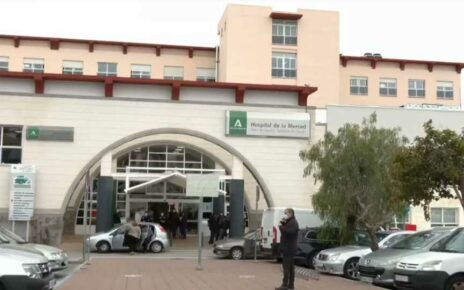KING Charles has been proclaimed as the sovereign following the Queen’s death on September 8, 2022.
Although he is now officially the King, the coronation is still some time away.
Why is there a gap between the Queen’s death and King Charles’ coronation?
The coronation usually takes place several months after the death of the previous monarch, as it is considered a joyous occasion that would be inappropriate while mourning continues.
The gap also allows time to make the many preparations for the coronation.
It gives the country time to grieve for Queen Elizabeth II, with a 10-day period of mourning.
King Charles has called for Royal Mourning to be observed from his mother’s death until seven days after the funeral.

He will address the nation on September 9, 2022, to pay tribute to Britain’s longest reigning monarch,
On September 10, 2022, the Accession Council will meet at St. James’ Palace to proclaim King Charles the new sovereign.
Read more on the queen

Timings for Queen’s gun salute across UK revealed – and how to watch live

Devastated King Charles & Queen Camilla leave Balmoral after Queen’s death
Hundreds of privy counsellors, including the Prime Minister and senior ministers attend.
The proclamation is then read at St.James’ Palace and the Royal Exchange in the City of London, confirming Charles as king.
However, his coronation is expected to take place much later, possibly not even until 2023
What happens at the coronation?
Elizabeth II acceded to the throne at the age of 25 upon the death of her father, George VI, on February 6, 1952.
Most read in Royal

Poignant moment Harry is consoled by airport staff & boards flight to Windsor

Harry returns to London after arriving in Scotland too late for Queen's death

All the cancellations or closures after the Queen died – from shops to football

King Charles to address nation TODAY before he's proclaimed Monarch
She was proclaimed queen by her privy and executive councils shortly afterwards but her coronation didn’t take place until June 2, 1953 – almost a year later.
The delay was due to the tradition of allowing an appropriate length of time to pass after a monarch dies before holding such festivities.
This interval also gives the planners enough time to prepare for the ceremony.
For example, for Queen Elizabeth II, the one-day coronation ceremony took 14 months of planning and rehearsing.
All you need to know after Queen Elizabeth II dies aged 96

THE nation is in mourning after beloved Queen Elizabeth dies aged 96 – here is all you need to know about Her Majesty’s glorious life and what’s next.
- When is the Queen's funeral?
- What happens now the Queen has died?
- How old was the Queen when she died?
- What is the mourning period for the Queen?
- What is the new line of succession?
- Will there be a bank holiday on the day of the Queen's funeral?
- When can royal fans visit the Queen's coffin?
- Where will the Queen be buried?
- Why is 'London Bridge is down' the secret code?
- What is D-Day?
- Who are the Queen's grandchildren?
It was the first ever to be televised and was watched by 27 million people in the UK alone.
Westminster Abbey has been the setting for every coronation since 1066, with the monarch seated on the Coronation Chair and it’s almost certain that King Charles will also receive his ceremony here.
The ceremony itself is performed by the Archbishop of Canterbury, the most senior cleric in the Church of England, of which the monarch is supreme governor.
Other clergy and members of the nobility also have roles and many government officials and guests attend, including representatives of other countries, including the Commonwealth.
The essential elements of the coronation have remained largely unchanged for the past thousand years.
The sovereign is first presented to, and acclaimed by, the people.
The monarch then swears an oath to uphold the law and the Church and is anointed with holy oil, invested with regalia, and crowned, before receiving the homage of his or her subjects.
Read More on The Sun

After the Queen’s tragic death – the new line of succession explained

Paddington Bear says ‘Thank you Ma’am’ in touching tribute to the Queen
Wives of kings are then anointed and crowned as queen consort.
The service ends with a closing procession, and since the 20th century it has been traditional for the Royal Family to appear later on the balcony of Buckingham Palace, before attending a banquet there.
Source: Read Full Article
